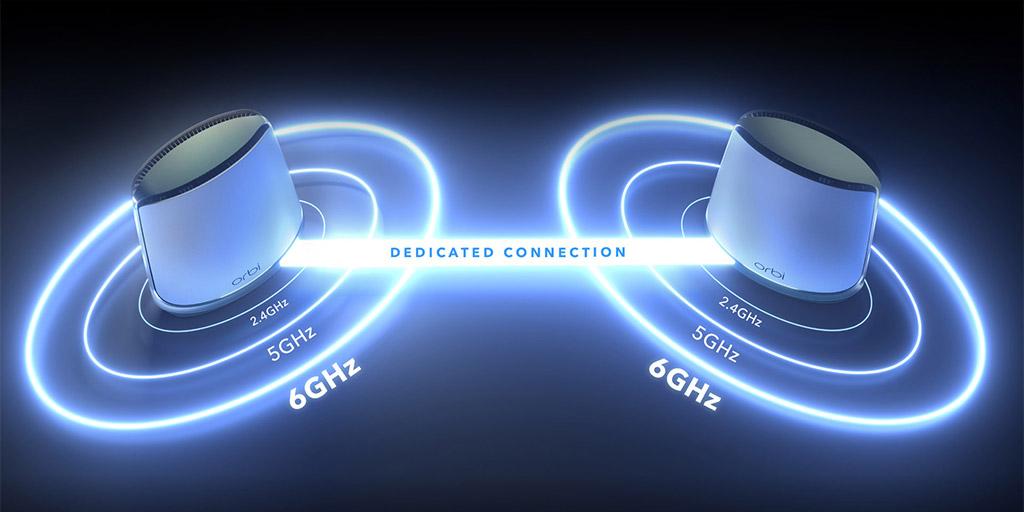The world of WiFi has evolved greatly since first being introduced to consumers in 1997 – both in terms of speed and capability, as well as naming and positioning. The initial consumer WiFi offering was based on the IEEE 802.11 standard, and subsequent versions were named based on their updates and amendments to capabilities, for instance 802.11b or 802.11g. As this became more and more confusing to consumers, a decision was made in 2018 by the WiFi Alliance to make the naming of WiFi standards easier to understand – and thus easier to adopt as technologies evolved and grew with changing consumer needs. Today we are on the cusp of the next phase of great for wireless connectivity via WiFi 6E – but understanding how we got here can allow us to appreciate all that WiFi 6E delivers today.
The Journey of WiFi to WiFi 6E
WiFi certainly took the world by storm, with consumers and businesses realizing the benefits of increased Internet connectivity and capabilities.
In the late 1990s, both 802.11b and 802.11a were released. Using 2.4 GHz frequency, 802.11b supported a maximum theoretical rate of 11 Mbps with a range of 150 feet. Additionally, the components of 802.11b were inexpensive – making the technology more accessible to consumers. However, it was also had the slowest maximum speed and since 802.11b operated in the 2.4 GHz, competing devices and other 2.4 GHz Wi-Fi networks could cause interference. With 802.11a, on the other hand, a more complex technique known as Orthogonal Frequency Division Multiplexing (OFDM) was used to generate the wireless signal, giving it a few advantages over 802.11b. First, it operated in the less crowded 5 GHz frequency band, making it less prone to interference, and its bandwidth was much higher with a theoretical max of 54 Mbps. Given these advantages, it was more expensive, and found more in business applications while 802.11b was more popular in the consumer market.
An improvement came with 802.11g. Using the same OFDM technology as the 802.11a, the 802.11g supported a maximum theoretical rate of 54 Mbps. However, like the 802.11b, it operated in the more crowded 2.4 GHz frequency – meaning it was still prone to interference issues. Backward compatible with 802.11b devices, 802.11g users enjoyed significantly faster WiFi speeds and coverage.
The next significant breakthrough came in 2009 with 802.11n or what we’d now call WiFi 4. WiFi became faster and more reliable, as 802.11n supported a maximum theoretical transfer rate of 300 Mbps (and could reach up to 450 Mbps when using three antennae). 802.11n used Multiple Input Multiple Output (MIMO). This means there were multiple transmitters and receivers that could operate simultaneously at one or both ends of the link to a single device, providing a significant increase in data without needing a higher bandwidth or transmit power. Additionally, it could operate in both the 2.4 GHz and 5 GHz bands.
802.11ac or WiFi 5 – representing a big step in the evolution of WiFi – was introduced in 2014, supercharging WiFi speeds to 433 Mbps all the way to several Gigabits per second. This was possible as 802.11ac worked exclusively in the 5 GHz band, supported up to eight special streams, doubled the channel width to 80 MHz and used a technology called beamforming – meaning the antennae transmits the radio signals so they’re directed at a specific device. Another important advancement with WiFi 5 was multi-user MIMO (MU-MIMO). While MIMO directs multiple streams to a single client, MU-MIMO can direct the spatial streams to multiple devices simultaneously. This doesn’t increase the speed to any single client, it can increase the overall data throughput of the entire network.
With the introduction of WiFi 6 (802.11ax), the industry is again pushing further. WiFi 6 avoids traffic congestion in public spaces, offers higher data rates and capacity (up to 9.6 Gbps) as well as having improvements similar to 5G. It also offers better 2.4 GHz and 5 GHz spectrum support and increased multi-user, multiple input, multiple output (MU-MIMO) from 4 x 4 to 8 x 8. The overall result is better and faster performance while allowing a person to connect even more devices in their home. And, unlike past standards, Wi-Fi 6 allows one router to handle more antennas – meaning one router can connect to more devices.
Furthermore, with WiFi 6E, you get all benefits of WiFi 6, plus a new frequency band as WiFi 6E supports an all-new 6GHz frequency, which has higher throughputs and lower latency.
Key Features of WiFi 6E and the 6 Ghz Band
The 6GHz band is exclusive to 6E devices. 6 GHz also boasts a super high-speed connection with up to 10.8 Gbps WiFi. And because there are a limited (but growing) number of devices on the 6 GHz band, that means ultra-low latency when it comes to both real-time network traffic and gaming. This new form of WiFi also offers users incredibly high speeds and less interference with 3X more high-bandwidth 160MHz WiFi channels. With WiFi 6E, there’s an ever-increasing list of possibilities for home networks. Through this new technology, you can take advantage of the boost in speed for smooth streaming and low latency that enables 4K/8K streaming, AR/VR gaming, and HD video conferencing. Whatever the need, 6 GHz band and WiFi 6E are a new, powerful, way to do everything from work to gaming. You can check out the breadth of possibilities in our WiFi 6E use cases.
As for NETGEAR’s latest offering in the WiFi 6E space, the industry’s first quad-band WiFi 6E system, Orbi WiFi 6E Mesh System ensures maximum throughput with 16 separate WiFi streams. This is the highest specification possible for new and legacy devices, at 2.4, 5 and 6GHz -- as well as a dedicated 5 GHz backhaul. NETGEAR pioneered this dedicated backhaul technology to exchange data between the router and satellites without impacting performance.


